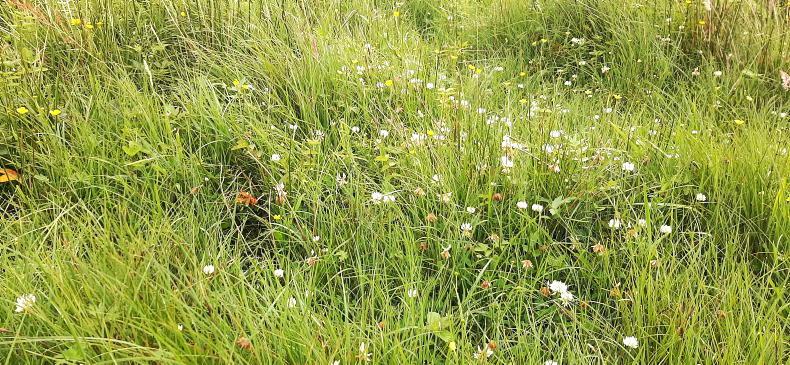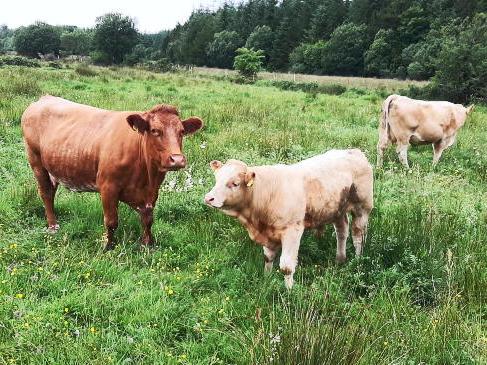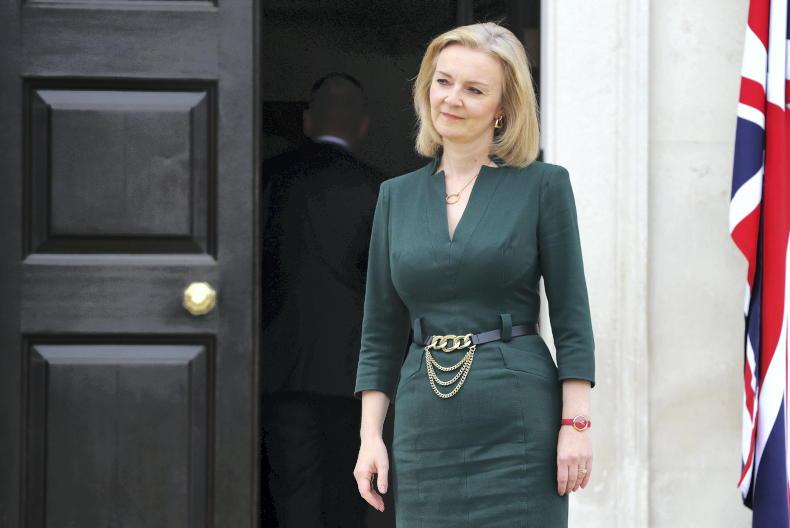The hotly anticipated Results-Based Environment Agri Pilot, what has become known as the REAP agri-environmental scheme, was launched and opened for applications on 21 April and closes on 10 May.
The two-year pilot with a fund of €10m can accommodate 2,000 applications, with Minister for Agriculture Charlie McConalogue explaining that this is the maximum number of participants allowed in a pilot scheme, while transitional arrangements are in place awaiting the introduction of the next CAP in 2023.
The scheme has a maximum payment of €6,300 (excluding partnerships) over the two-year lifetime of the pilot.
Payments are based on a participation payment of €1,200 per applicant, along with the selection of one of two main measures.
The first measure, low input grassland (LIG), has a maximum payment of €400/ha on a maximum area of 10ha and also offers the potential for a ‘late meadow cutting bonus’ of €50/ha up to the same maximum area of 10ha.
Multi-species leys (MSL) is the second measure and this has a maximum payment of €250/ha, again on a maximum area of 10ha.
There is a lower maximum payment per hectare for the multispecies swards, as the Department explained that these crops can still be operated in a relatively intensive manner and therefore the same economic potential is not lost as with LIG.
This means the maximum level of payment for farmers selecting the MSL measure is €4,550, as detailed in Table 1.
These are the upper payment levels attainable and are based on the crops receiving a maximum rating when scored by your adviser. Crops are scored from one to 10, and Table 2 details the level of payment for each rating. Farmers can also select a mixture of LIG and MSL measures.
Crop assessment
The farm adviser has a large role to play in the pilot, as it will be them who will be responsible for scoring the crops. Fields will be assessed by the adviser under three headings – ecological integrity, field margins and field boundary.
For LIG, the ecological integrity will be scored across the richness of species present and the quantity/cover/structure of each species and how they contribute to the makeup of the sward. The Department advises that further information will be disseminated to advisers, along with training on scoring swards.
The MSL will be assessed in a similar manner for ecological integrity. This may possibly be more straightforward, as it assesses the number of species sown and present, and the structure/makeup of the sward.
Field margins can be maintained in a manner that will enhance crops, which may score poorly. The Department advises that field margins can be introduced and maintained at a width of 1m, 2m, 3m or 5cm.
These must be fenced off to prohibit any interference by grazing livestock (electric fencing will suffice) and will need to be managed where necessary through spot spraying, topping/strimming etc.
The field boundary is an assessment of the density of hedgerows and stonewalls per hectare and an assessment of how these are managed.
Results based measures
The results-based mechanism means there is not an exact listing of practices farmers must abide by.
For example, the low input permanent pasture and traditional hay meadows measures in the Green Low-Carbon Agri-Environmental Scheme (GLAS) have upper permitted levels of nitrogen and timelines for when certain practices are allowed.

Low input grassland will be scored on a scale of 1 to 10 with swards with a diverse mix of species scoring best.
While advice will be available on how best to manage these swards, it will be up to the farmer and their adviser to determine the best course of management to deliver the best results for that crop, which will ultimately influence payment rates.
The results-based management principles for MSL crops are the same. The Department says this is one of their key objectives in the pilot, to test if such measures can be managed sufficiently in a results-based manner.
The outcome of this assessment will influence what measures will be included in a flagship agri-environmental scheme, which is planned for roll-out in 2023.
Participants will therefore not be in a position to determine the exact level of payment they may receive at the application stage.
Complementary actions
In addition to the two main measures, there is an additional €1,200 that can be drawn down by completing complementary actions in year one. There are three actions, the first of which is tree planting. There is a payment of €9.20 per tree planted, meaning 130 trees are required to achieve the maximum payment.
Hedgerow planting is the second action and has a payment of €15.80/m. Hedgerow infilling is the final action and is also costed at the same figure, meaning 76m of new planting or infilling of gaps is required to receive payment of €1,200.
Eligibility criteria
For applicants to be deemed eligible, they must possess an active herd number and have declared lands on the 2020 Basic Payment Scheme application. Participation in GLAS, Organic Farming Scheme or other European Innovation Partnership (EIP) projects will prevent participation.

Multspecies swards will be assessed by the number of species in the seed mix and present in the sward along with the structure of the sward. \ Donal O'Leary
Participants must engage the services of an adviser to submit an application. The maximum area is 10ha and the minimum area is 2ha. Commonage lands and lands which contain heather are not eligible.
This does not mean farmers with commonage or heather in certain fields cannot apply, rather that these areas cannot be used to activate a payment.
Fields without hedgerows/ stonewalls and possessing a defined boundary via permanent fencing can be included.
Ranking and selection
Applications will be ranked and marked on three criteria, each of which has equal weighting. The three criteria are;
Holding intersection with high status water area or low water status area.Proportion of Natura land on holding.Proportion of ANC land on holding.Applicants are also being split into two groupings – farmers who are operating above 140kg organic N/ha and those operating at or below 140kg organic N/ha.
The Department states that neither of these groups has priority over the other, but they are looking for a good geographical spread and that this may influence the ranking and selection process if the geographical spread does not materialise organically.
Role of the adviser
As touched on earlier, the adviser will have a large role to play and will be required to interact closely with each applicant. The Department will not have a contractual link with the adviser and as such, the payment of an adviser will be a business transaction between the adviser and the applicant.
Advisers must submit the initial application form, which takes the form of an expression of interest rather than a detailed plan like in previous agri-environmental schemes.
They must then attend compulsory training for REAP prior to completing any mapping tasks and submitting assessments on an applicant’s behalf.
Advisers will be responsible for on-field land assessment and scoring and it will also be the responsibility of the adviser to inform their clients throughout the pilot scheme.
Applicants must be involved in the assessment and scoring functions to ensure optimum knowledge transfer. Key dates
Wednesday 21 April: Pilot scheme opens for applications.Monday 10 May: Deadline for submitting applications.Early June: Adviser training.July/August: Issuing of assessment/payment claims process.December: Payments commence for year one.
The hotly anticipated Results-Based Environment Agri Pilot, what has become known as the REAP agri-environmental scheme, was launched and opened for applications on 21 April and closes on 10 May.
The two-year pilot with a fund of €10m can accommodate 2,000 applications, with Minister for Agriculture Charlie McConalogue explaining that this is the maximum number of participants allowed in a pilot scheme, while transitional arrangements are in place awaiting the introduction of the next CAP in 2023.
The scheme has a maximum payment of €6,300 (excluding partnerships) over the two-year lifetime of the pilot.
Payments are based on a participation payment of €1,200 per applicant, along with the selection of one of two main measures.
The first measure, low input grassland (LIG), has a maximum payment of €400/ha on a maximum area of 10ha and also offers the potential for a ‘late meadow cutting bonus’ of €50/ha up to the same maximum area of 10ha.
Multi-species leys (MSL) is the second measure and this has a maximum payment of €250/ha, again on a maximum area of 10ha.
There is a lower maximum payment per hectare for the multispecies swards, as the Department explained that these crops can still be operated in a relatively intensive manner and therefore the same economic potential is not lost as with LIG.
This means the maximum level of payment for farmers selecting the MSL measure is €4,550, as detailed in Table 1.
These are the upper payment levels attainable and are based on the crops receiving a maximum rating when scored by your adviser. Crops are scored from one to 10, and Table 2 details the level of payment for each rating. Farmers can also select a mixture of LIG and MSL measures.
Crop assessment
The farm adviser has a large role to play in the pilot, as it will be them who will be responsible for scoring the crops. Fields will be assessed by the adviser under three headings – ecological integrity, field margins and field boundary.
For LIG, the ecological integrity will be scored across the richness of species present and the quantity/cover/structure of each species and how they contribute to the makeup of the sward. The Department advises that further information will be disseminated to advisers, along with training on scoring swards.
The MSL will be assessed in a similar manner for ecological integrity. This may possibly be more straightforward, as it assesses the number of species sown and present, and the structure/makeup of the sward.
Field margins can be maintained in a manner that will enhance crops, which may score poorly. The Department advises that field margins can be introduced and maintained at a width of 1m, 2m, 3m or 5cm.
These must be fenced off to prohibit any interference by grazing livestock (electric fencing will suffice) and will need to be managed where necessary through spot spraying, topping/strimming etc.
The field boundary is an assessment of the density of hedgerows and stonewalls per hectare and an assessment of how these are managed.
Results based measures
The results-based mechanism means there is not an exact listing of practices farmers must abide by.
For example, the low input permanent pasture and traditional hay meadows measures in the Green Low-Carbon Agri-Environmental Scheme (GLAS) have upper permitted levels of nitrogen and timelines for when certain practices are allowed.

Low input grassland will be scored on a scale of 1 to 10 with swards with a diverse mix of species scoring best.
While advice will be available on how best to manage these swards, it will be up to the farmer and their adviser to determine the best course of management to deliver the best results for that crop, which will ultimately influence payment rates.
The results-based management principles for MSL crops are the same. The Department says this is one of their key objectives in the pilot, to test if such measures can be managed sufficiently in a results-based manner.
The outcome of this assessment will influence what measures will be included in a flagship agri-environmental scheme, which is planned for roll-out in 2023.
Participants will therefore not be in a position to determine the exact level of payment they may receive at the application stage.
Complementary actions
In addition to the two main measures, there is an additional €1,200 that can be drawn down by completing complementary actions in year one. There are three actions, the first of which is tree planting. There is a payment of €9.20 per tree planted, meaning 130 trees are required to achieve the maximum payment.
Hedgerow planting is the second action and has a payment of €15.80/m. Hedgerow infilling is the final action and is also costed at the same figure, meaning 76m of new planting or infilling of gaps is required to receive payment of €1,200.
Eligibility criteria
For applicants to be deemed eligible, they must possess an active herd number and have declared lands on the 2020 Basic Payment Scheme application. Participation in GLAS, Organic Farming Scheme or other European Innovation Partnership (EIP) projects will prevent participation.

Multspecies swards will be assessed by the number of species in the seed mix and present in the sward along with the structure of the sward. \ Donal O'Leary
Participants must engage the services of an adviser to submit an application. The maximum area is 10ha and the minimum area is 2ha. Commonage lands and lands which contain heather are not eligible.
This does not mean farmers with commonage or heather in certain fields cannot apply, rather that these areas cannot be used to activate a payment.
Fields without hedgerows/ stonewalls and possessing a defined boundary via permanent fencing can be included.
Ranking and selection
Applications will be ranked and marked on three criteria, each of which has equal weighting. The three criteria are;
Holding intersection with high status water area or low water status area.Proportion of Natura land on holding.Proportion of ANC land on holding.Applicants are also being split into two groupings – farmers who are operating above 140kg organic N/ha and those operating at or below 140kg organic N/ha.
The Department states that neither of these groups has priority over the other, but they are looking for a good geographical spread and that this may influence the ranking and selection process if the geographical spread does not materialise organically.
Role of the adviser
As touched on earlier, the adviser will have a large role to play and will be required to interact closely with each applicant. The Department will not have a contractual link with the adviser and as such, the payment of an adviser will be a business transaction between the adviser and the applicant.
Advisers must submit the initial application form, which takes the form of an expression of interest rather than a detailed plan like in previous agri-environmental schemes.
They must then attend compulsory training for REAP prior to completing any mapping tasks and submitting assessments on an applicant’s behalf.
Advisers will be responsible for on-field land assessment and scoring and it will also be the responsibility of the adviser to inform their clients throughout the pilot scheme.
Applicants must be involved in the assessment and scoring functions to ensure optimum knowledge transfer. Key dates
Wednesday 21 April: Pilot scheme opens for applications.Monday 10 May: Deadline for submitting applications.Early June: Adviser training.July/August: Issuing of assessment/payment claims process.December: Payments commence for year one. 









SHARING OPTIONS